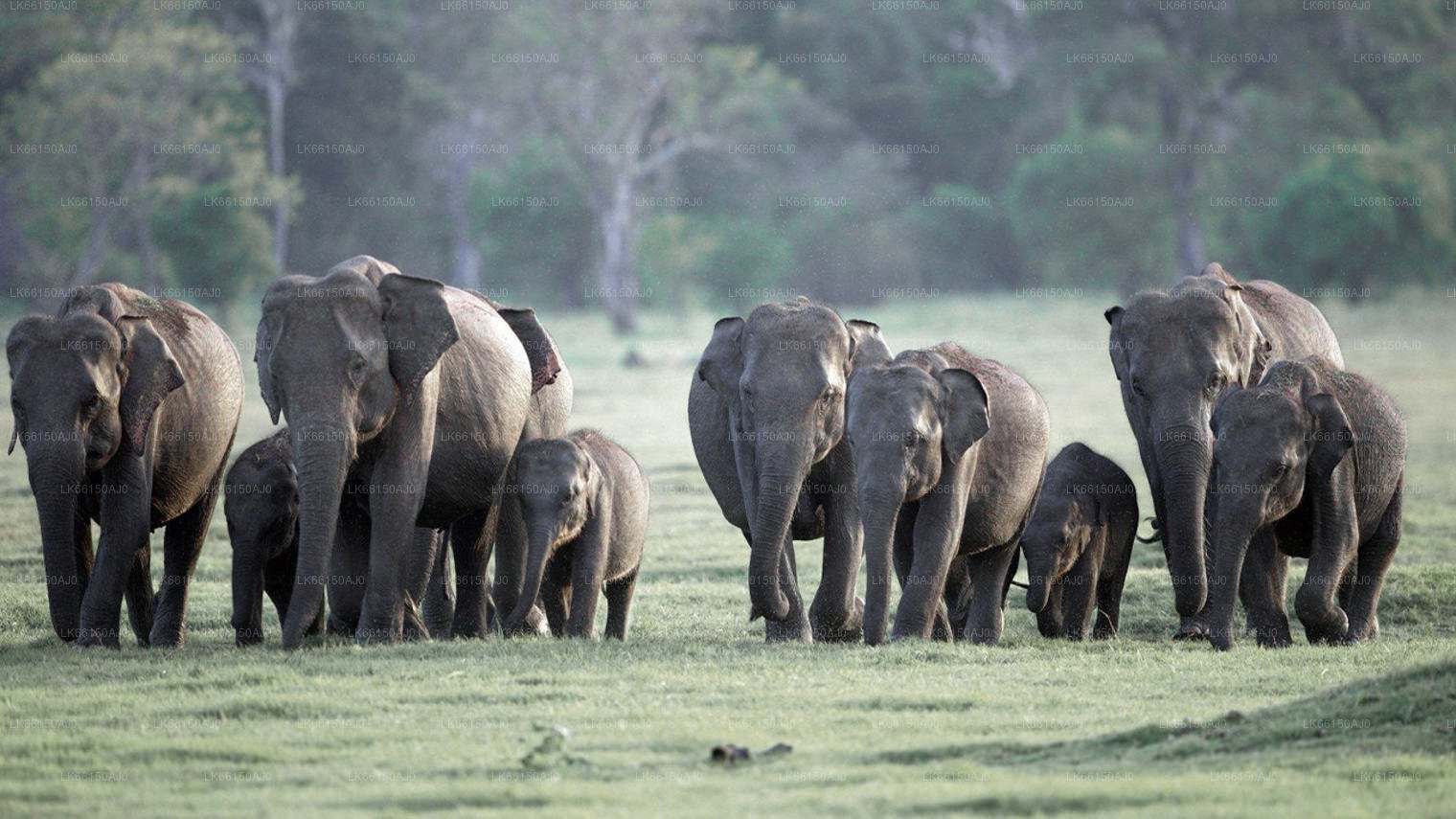
Ville de Minneriya
Minneriya, située au Sri Lanka, est réputée pour son parc national, haut lieu de biodiversité et abritant une importante population d'éléphants d'Asie. Le point central du parc est le pittoresque bassin de Minneriya, qui attire les passionnés de faune sauvage et offre un cadre exceptionnel pour les safaris nature.
Minneriya Lake
Minneriya Lake is a large, man-made reservoir located in the North Central Province of Sri Lanka. It is situated near the town of Habarana and is part of the Minneriya National Park, which is renowned for its rich biodiversity. The lake itself is a key water source in the region and is famous for its association with the annual gathering of wild Asian elephants.
History
Minneriya Lake was constructed during the 3rd century AD by King Mahasena as part of an irrigation project to improve water management and agriculture in the region. It is an ancient reservoir, designed to store water for farming and to combat droughts.
Minneriya National Park
The lake is located within Minneriya National Park, a protected area that spans 8,889 hectares. The park is well-known for its wildlife, including elephants, leopards, and a wide variety of birds.
Elephant Gathering
The lake is famous for the "Minneriya Elephant Gathering," one of the largest congregations of Asian elephants in the world. This spectacular event takes place annually, usually during the dry season, between July and September, when the elephants come to the lake to drink and bathe. Hundreds of elephants, both wild and from surrounding areas, gather here, creating a remarkable sight.
Ecological Importance
The lake and surrounding park are crucial for local wildlife, offering a rich ecosystem for numerous species of birds, mammals, and reptiles. The surrounding area has a mix of dry zone forest and grassland, providing a variety of habitats for the creatures that live there.
Tourism and Activities
Minneriya Lake attracts tourists, especially wildlife enthusiasts, photographers, and nature lovers. Visitors can take safaris within Minneriya National Park to observe the elephants and other wildlife, as well as enjoy birdwatching and nature walks around the lake.
Overall, Minneriya Lake is an important cultural and ecological landmark in Sri Lanka, both for its historical significance and its role in preserving the natural habitat of Sri Lanka's wildlife.
À propos du district de Polonnaruwa
Polonnaruwa est la deuxième plus grande ville de la province du Centre-Nord du Sri Lanka. Classée au patrimoine mondial de l'UNESCO, sa cité antique est riche d'une riche histoire de conquêtes et de luttes, et constitue à juste titre le troisième élément du Triangle culturel. Située à environ 140 km au nord-est de Kandy, Polonnaruwa offre des heures de plaisir sans fin aux amateurs d'histoire et de culture, grâce à ses nombreux sites remarquables.
La plupart des ruines actuelles sont attribuées au roi Parakrama Bahu Ier, qui consacra d'importantes ressources royales à l'urbanisme, notamment à la construction de parcs, d'édifices et de systèmes d'irrigation. Son règne est considéré comme un âge d'or, marqué par la prospérité du royaume sous la conduite d'un souverain visionnaire. Le Parakrama Samudra, un immense réservoir, porte le nom de son mécène. Le célèbre palais royal, la salle d'audience entourée d'éléphants en pierre magnifiquement sculptés et le bassin de baignade témoignent de l'excellence technique de l'époque.
À propos de la province du Centre-Nord
La province du Centre-Nord, la plus grande du pays, couvre 16 % de la superficie totale du pays. Elle est composée de deux districts : Polonnaruwa et Anuradhapure. Anuradhapura est le plus grand district du Sri Lanka, avec une superficie de 7 128 km².
La province du Centre-Nord, la plus grande du pays, couvre 16 % de la superficie totale du pays. Elle est composée de deux districts : Polonnaruwa et Anuradhapure. Anuradhapura est le plus grand district du Sri Lanka, avec une superficie de 7 128 km².














